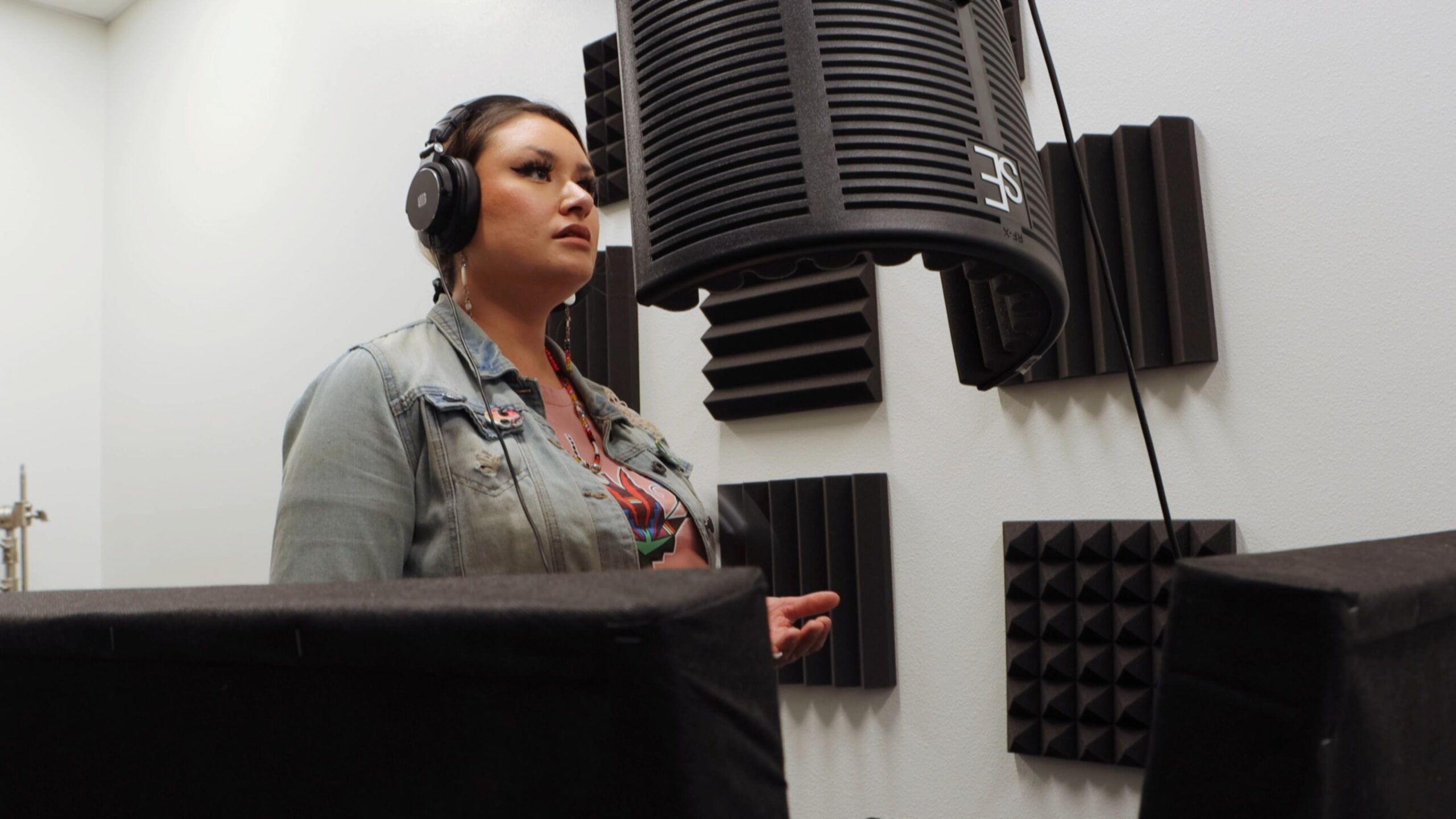This story was originally published by the First Peoples Fund. For more stories on the creativity, passion, and dedication of individuals at the heart of the Indigenous Arts Ecology, visit www.firstpeoplesfund.org.
Settled in the scenic landscape of Kyle, South Dakota, the Wicahpi Olowan (WO) Music Program at First Peoples Fund Oglala Lakota Artspace in the Pine Ridge Reservation stands as a transformative initiative, helping to bring life into the artistic aspirations of Indigenous talents of all ages.
Led by dedicated individuals such as Program Manager Talon Bazille Ducheneaux and Tiana Spotted Thunder, Rapid City Mentor, the Wicahpi Olowan team is engaged in the world of music, evolving the program into a dynamic center for aspiring and existing musicians, singers, songwriters, and producers to showcase their skills while cultivating rich cultural preservation and creativity.
“I believe that by having music careers ourselves as WO staff, we can host workshops to educate and coach others who need the boost to either get their music careers started or to grow as artists. The education part is most important for those looking to add a business aspect to their music careers,” Tiana said.
Since its inception last spring, with the help of the Playing for Change Foundation, the music program has been a beacon of support for Indigenous artists, offering diverse opportunities through free workshops, concerts, jam sessions, and events. The activities span diverse genres, including hip-hop, rock, folk, and traditional Oglala Lakota music, showcasing the incredible diversity within Indigenous artistic expression.
Tiana Spotted Thunder“Being able to blend generations before into the generations up and coming is such a blessing to be able to witness.”

“We’ve had artists who’ve come in primarily known in their communities as traditional singers and keepers of those old songs. But they’ve had new songs in their expression and things that aren’t tied to being traditional or only being with the drum,” said Talon.
One of the unique aspects of the Wicahpi Olowan Music Program is its commitment to providing Indigenous creatives with a space to explore and go beyond the boundaries of traditional music. Far from confining artists to the usual Indigenous musical genres, the music program embraces a spectrum of expression, allowing musicians to venture into any genre that interests them.
Fostering the program is the Oglala Lakota Artspace, an innovative art space designed to promote creativity and preserve the rich cultural heritage of the Oglala Lakota nation. Through this collaborative effort, artists find a platform to express themselves and connect with their community.
“I noticed a lack of awareness and teachings about things that I know I could share because they are things passed down to me from those who have passed away. I wouldn’t want their teachings to die along with them. Being able to blend generations before into the generations up and coming is such a blessing to be able to witness,” Tiana said.
One of the music program’s key elements is its community connections of the key elements of the music program is the community connections it holds. By linking aspiring Native artists, facilitating insightful exchanges, and providing assistance with project completion, the program has become a home for collaboration and growth.
“We want to be able to try to send some of these artists in our roster to conferences, but also set up artists and residencies for them to check out outside of South Dakota and allow them the opportunity to travel with their music and create in a new place and see what that’s like,” Talon said.
As we celebrate the great things that have unfolded since the opening of the WO Music Program, it is evident that this initiative is not just about music; it’s about building a community, preserving culture, and uplifting Indigenous talent.
